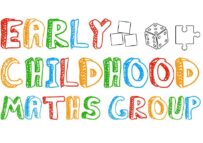Encouraging children to notice

Noticing’ is an essential part of maths talk. Mathematical noticing asks children:
* to stop and look at something very closely
* to think carefully and to make connections to what they already know
* to wonder and to question
* to communicate their thoughts
This is a lot to take on board and it can take time to develop such a broad range of skills. But there are lots of ways to support young children to notice and begin to make mathematical sense of what they are seeing. The most important of these is to model noticing. As adults, we need to notice the mathematics around us and talk about it in our everyday interactions with children. For example, at the snack table “I’ve taken a bite out of my round biscuit and now it looks like a moon”.
A pedagogy of noticing involves encouraging playful curiosity and inquiry so that we are modelling how we explore mathematical ideas and investigate further but without this feeling pressured. For example, we might ponder “I wonder if an Emperor Penguin is taller or shorter than me?” Engaging children in mathematical talk and supporting their attempts to put a mathematical idea into words helps them gain confidence and enjoy doing so. Stimuli for mathematical talk could be anything from a photograph highlighting shape or number properties, to patterns in the world around us (such as an array of daisies on the grass, or an arrangement of leaves on a branch). The maths talk could be regular and planned-for, or in-the-moment.
We can continue to build children’s confidence with open-ended questioning whilst engaging in maths talk. When noticing mathematics with children, there are no right or wrong answers as what one person notices might be completely different from another – all are valid and valuable. So, instead of asking closed and leading questions, such as ‘’How many are there?” or “What shape is it?”, we can ask “What do you notice?” or “What do you wonder?” The opportunity to focus on thinking and reasoning over ‘correct’ answers reveals much about the child’s thinking and understanding, and may open up discussions about number, size, shape, pattern or position that were not even anticipated.
